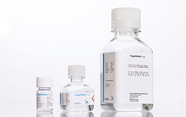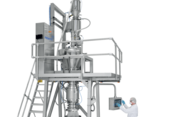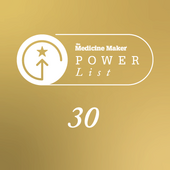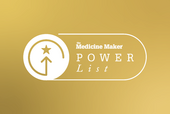The New Age of Global, Political, and Regulatory Challenges
A report attempts to unravel the many challenges that face business leaders. We discuss those inherent in – and unique to – the pharmaceutical industry, from supply chains to tariffs, and more.
| 7 min read | Interview

“Addressing both geopolitical exposure and the life sciences’ own internal market forces will be essential to building a resilient supply chain.”
The events of the past five years have tested the mettle of the global C-suite like never before. From pandemic shocks and geopolitical turbulence, to rapid-fire advancements in AI and automation, senior leaders have had to navigate a seemingly endless cycle of disruption.
Amid this climate of volatility, the stakes for operational leadership have never been higher. For chief operating officers, procurement chiefs, finance executives, and supply chain leaders, resilience is no longer a buzzword — it’s a daily imperative. But how do you future-proof a business when the future refuses to sit still? And what does it take to lead transformation when the tools of yesterday approach obsoletion?
Argon & Co’s inaugural Operations Outlook offers a data-rich report of how 600 senior leaders are tackling these challenges, highlighting concerns such as inflation, AI adoption and Environmental, Social, and Governance (ESG) readiness. The report also examines how companies are responding, where they’re falling short, and what practical strategies they should prioritize in the next five years.
To unpack these insights further, we spoke with Michel Savini, Associate Partner at Argon & Co, about the forces shaping this new operational era — and what leaders must do now to build true resilience into the heart of pharmaceutical organizations.
Were there any industry-specific challenges or concerns in the report that stood out compared to other sectors?
The pharmaceutical industry faces unique challenges compared to other sectors. The research found that, more than other sectors, life sciences firms are prioritizing stronger connections with local suppliers; 40 percent of C-suite leaders from pharmaceutical firms cited this as a priority, compared with only 33 percent of respondents overall. As highlighted by the unfolding US tariff situation, pharmaceutical firms must be especially careful in reducing reliance on global markets and creating more stable sourcing to ensure consistent production.
While the US is a global leader in large-scale drug manufacturing, it relies heavily on imports for the secondary and tertiary materials essential to production. Other items, such as syringes, lab equipment, and packaging, are also predominantly sourced from China and India. Tariffs on these products could disrupt the flow of essential inputs, creating bottlenecks that may have a domino effect on healthcare systems across the globe.
Unlike other industries, where alternative suppliers can be more easily integrated, the pharmaceutical sector requires stringent regulatory approvals and quality control measures. Establishing local alternatives is not just a matter of cost or logistics, but of compliance with strict safety standards. Therefore, unlike other sectors – which may seek to reshore to the US – pharmaceutical companies may be inclined to wait out the current administration – driving up drug prices at least for the near term.
The report mentions that 55 percent of respondents experienced severe or substantial supply chain disruption. How does this play out in pharmaceuticals, where supply chain resilience is critical for patient safety?
For pharmaceuticals, supply chain disruptions are particularly alarming because they can directly impact access to lifesaving medicines. Overreliance on a single country — whether China or another major supplier — exposes pharmaceutical companies to geopolitical risks, trade restrictions, and regulatory uncertainties. These disruptions can delay or limit access to lifesaving medicines, directly impacting healthcare systems worldwide.
Supply chain fragility is also being driven by shifting market dynamics. A growing number of medicine shortages involve generic drugs. Stagnating generic prices, driven by group purchasing organizations negotiating aggressively low contracts with manufacturers, are making long-term production financially non-viable for some of these players.
A strained supply chain could lead to price volatility, competition for scarce raw materials, and manufacturing bottlenecks, reducing affordability and exacerbating healthcare inequalities. What’s more, strict regulatory requirements mean that switching suppliers or shifting production cannot be done quickly – further prolonging shortages.
To mitigate these risks, companies and governments are exploring reshoring or diversifying supply chains, but these efforts require long-term investment. Equally important are the structural market failures that continue to undermine the viability of generic medicine production. Unless commercial viability is restored for manufacturers, shortages will persist. Addressing both geopolitical exposure and the life sciences’ own internal market forces will be essential to building a resilient supply chain.
Given the pharmaceutical sector's reliance on global supply chains for APIs and raw materials, how should companies rethink their sourcing strategies to minimize geopolitical risks?
Diversification is key. Rather than sourcing the majority of APIs and critical materials from a single nation, companies should establish a multi-region supply strategy, incorporating suppliers from different geographies. This approach not only mitigates risks associated with trade restrictions and geopolitical tensions, it also enhances overall supply chain resilience.
In the short term, firms working with countries affected by regulatory or political uncertainties should conduct rigorous due diligence on both current and prospective suppliers. This includes evaluating their security measures, their compliance with international regulations, and their history of handling sensitive materials. Strengthening supplier audits and establishing backup plans, such as building contingency stocks of essential materials, can help safeguard against sudden disruptions.
Looking ahead, increasing investment in local or regional manufacturing provides a long-term strategy to reduce dependence on global supply chains. However, building and qualifying new production sites comes with its own fair share of challenges. This process can take years due to the strict regulatory requirements, rigorous quality control measures, and validation processes involved. While reshoring is complex and costly, governments and industry leaders recognize the need to support the domestic production of key pharmaceutical components to minimize reliance on external suppliers.
Additionally, leveraging advanced technologies — such as AI-enhanced planning systems and real-time tracking devices — can improve visibility, enabling proactive risk management and adaptive sourcing strategies.
How do you see increasing global regulatory complexities impacting supply chain and procurement strategies?
The move away from globalization is increasing regulatory complexities and reshaping pharmaceutical supply chains, making it more challenging to secure raw materials and manufacturing partners.
The Critical Medicines Act, proposed by the EU, is a new regulatory development that has the potential to transform European supply chains. The initiative aims to reduce dependence on non-EU countries for essential medicines by boosting local manufacturing and encouraging collaboration among EU member states. For pharmaceutical companies, this means prioritizing the development of manufacturing hubs within Europe and reducing reliance on regions with geopolitical risks. While this shift is designed to enhance supply chain resilience within the EU, it will also require substantial investment and adaptation to evolving EU regulations.
At the same time, the industry is facing a new kind of patent cliff – with more than $200 billion in annual revenue at risk throughout 2030. Unlike previous cycles, which largely involved small molecule drugs, many top revenue generators losing exclusivity are biologics produced from living cells. The emergence of competition from biosimilars introduces uncertainty – they are not as easily interchangeable as chemical generics, and their uptake will depend on factors like regulatory pathways, physician confidence, and pricing strategies. Regardless, pharmaceutical companies will need to focus on product development and lifecycle management to account for the expected revenue shortfall.
Ultimately, pharmaceutical firms are operating in an increasingly fragmented and competitive global market. These converging pressures will push pharmaceutical firms to invest in regulatory intelligence, strengthen supplier relationships, and adopt innovative technologies.
What’s the single most important operational priority a pharmaceutical C-suite team should focus on to future-proof their organization over the next five years?
Transitioning from a “just-in-time” to a “just-in-case” model is critical to help the pharma industry navigate an increasingly volatile world. Regulatory changes stemming from the Trump administration, rising numbers of chronic illnesses, political uncertainty, and fears of the next pandemic are cementing the need for greater supply chain resilience industry-wide.
Firms must continually evaluate the likelihood and impact of risk to embed resilience into their operations. There are several major steps that pharma firms can take to improve their resilience. For instance, taking time to develop and invest in strong, non-transactional supplier partnerships and backing these up with secondary suppliers will help put firms at the front of the queue during times of short supply.
The approach to building supply chain resilience must shift from “if” to “when” disruption will happen – and plan accordingly. Shifting to this mindset must be underpinned by three key features: end-to-end inventory allows stock reallocation in response to uncontrollable events and minimizes write-offs; strong category management, which constantly reviews suppliers and sourcing to mitigate risks before disruption happens; and having a clear policy on supply priorities creates focus during times of limited supply – and ultimately ensures the industry can continue to deliver life saving treatments to patients.



















